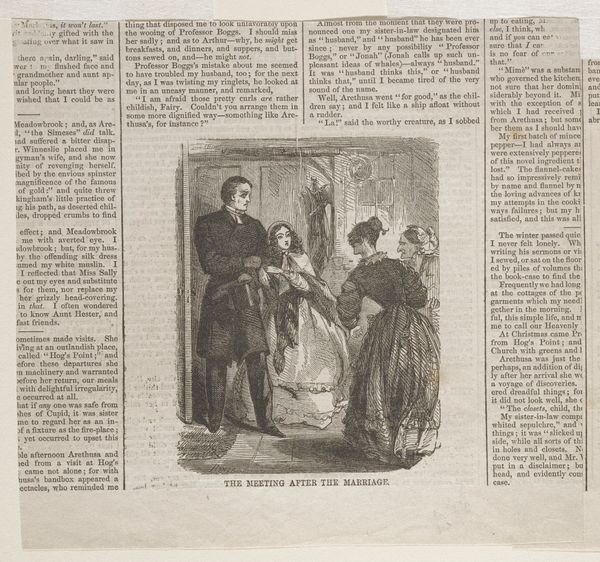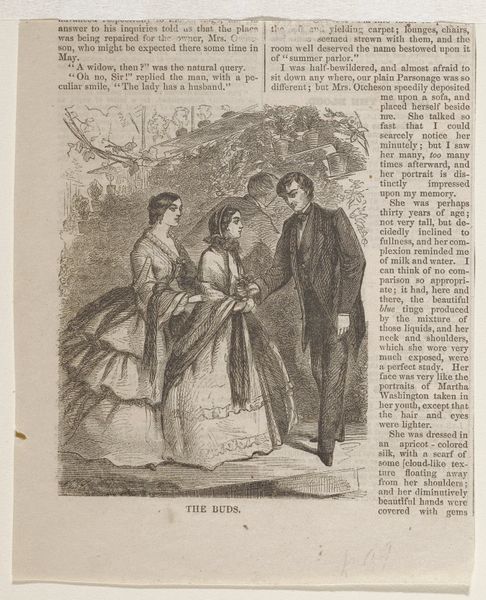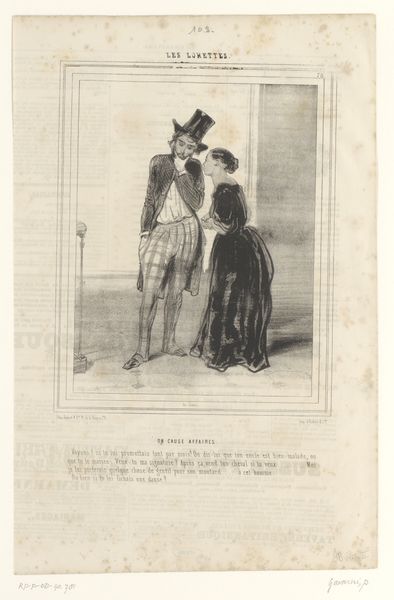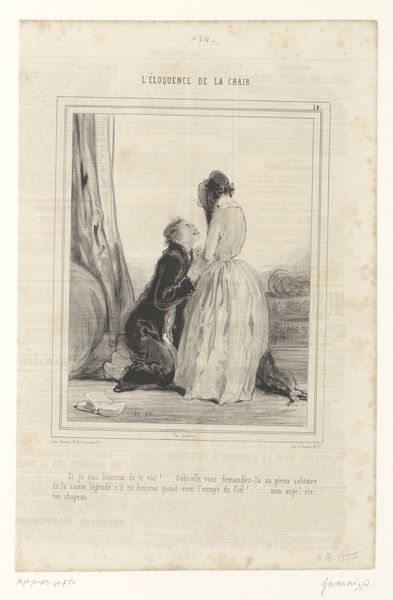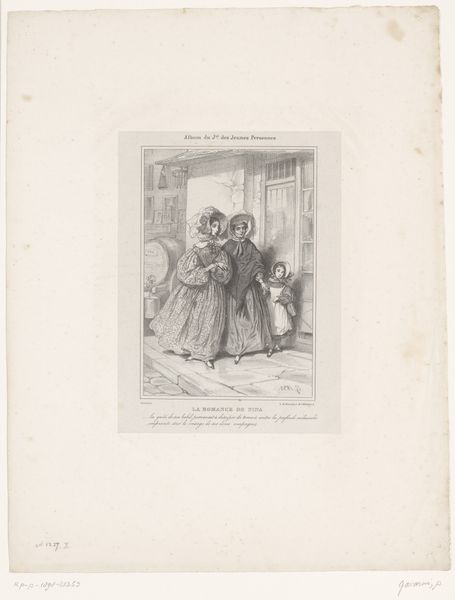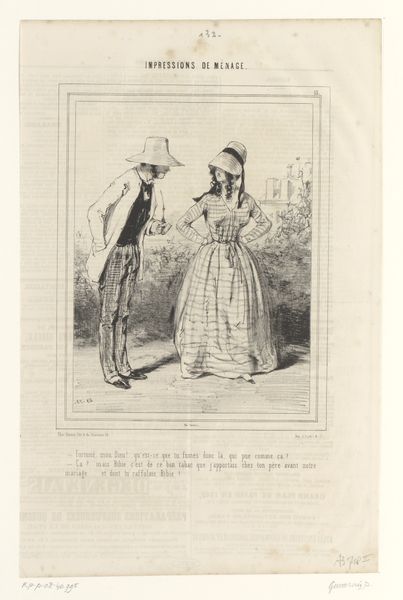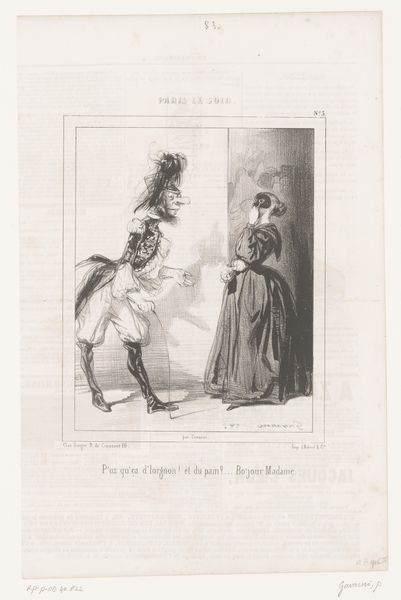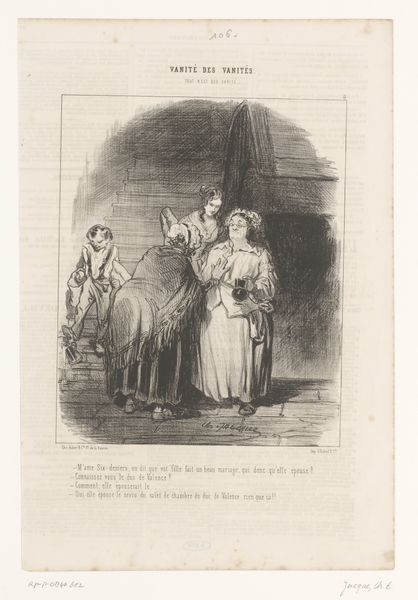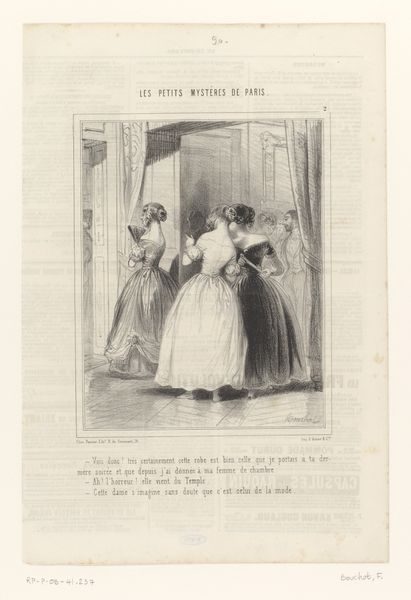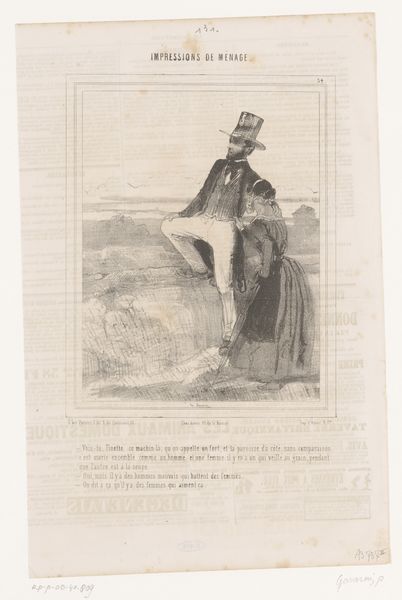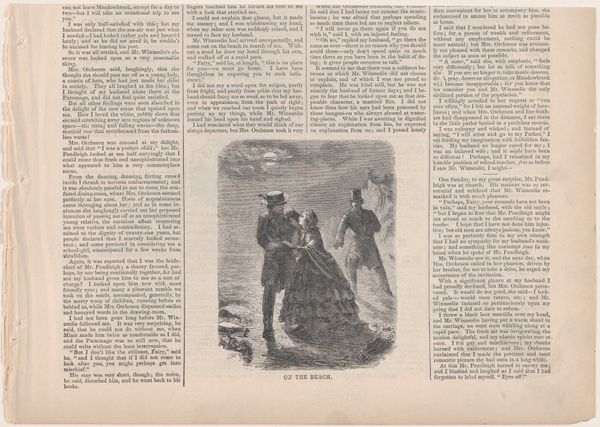
Dimensions: 4 3/8 x 3 3/8 in. (11.1 x 8.6 cm)
Copyright: Public Domain
Curator: Here we have Winslow Homer’s wood engraving, “On the Beach,” dating back to 1860. Editor: My immediate impression is how emotionally ambiguous this scene feels. There are figures in what seems like a clandestine encounter, yet rendered in stark blacks and whites, it’s all quite subdued. Curator: Yes, Homer frequently captured moments of social interaction within specific cultural contexts. Note the interplay of light and shadow that further emphasizes the romantic ideals of this period, despite the emotional uncertainty. Editor: I agree, formally, that monochromatic rendering is so powerful here. By limiting his tonal range, he distills the scene down to its core compositional elements: the interplay between light and the textured layering of clothing against the vast landscape. Curator: And considering it’s titled “On the Beach,” the beach itself almost acts as a liminal space—a boundary between worlds where societal norms and personal desires meet. This image could be considered an iconography of leisure but, equally, emotional treachery. Editor: Exactly! The lines formed by the figures clothing mimic the undulating form of the ocean that’s nearly invisible but so very present, so close, reminding me that even in realism the power of suggestion remains fundamental to pictorial intrigue. Curator: Observing such works offers us a glimpse into 19th-century social dynamics, but it also resonates with our present understanding of how personal narratives can intersect and find themselves mediated through environmental influences. Editor: I agree; the tensions made visible through structural composition remind us that the most successful images leave plenty to think about.
Comments
No comments
Be the first to comment and join the conversation on the ultimate creative platform.
